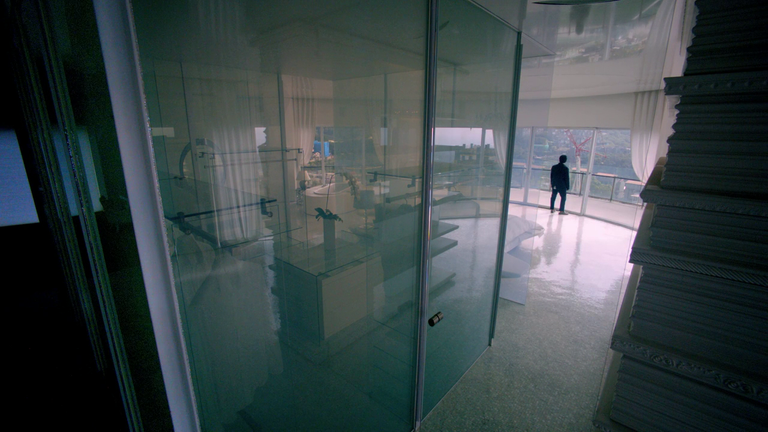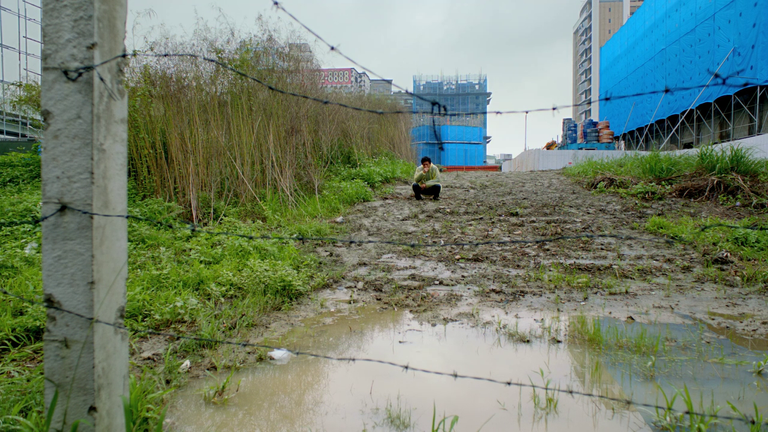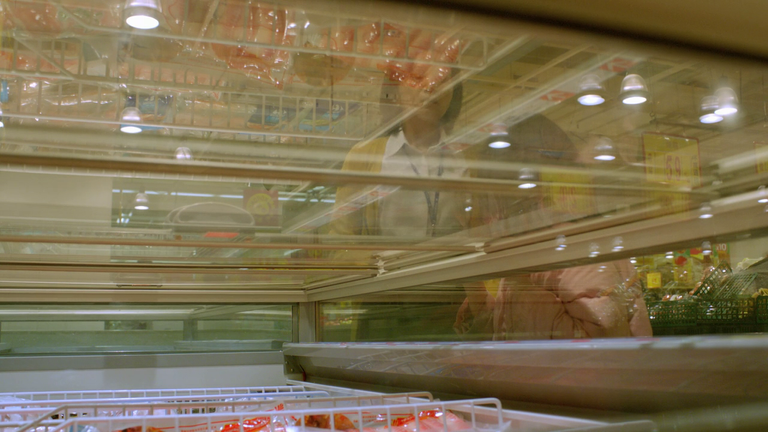'Stray Dogs' by Ming-liang Tsai Review: A little too much art and not enough substance

I recently watched 'Rebels of the Neon God' by director Ming-liang Tsai. It was my first introduction into his works, having never heard of them prior. To me, this was quite surprising, since I'm a rather large fan of asian cinema, particularly of the 80s and 90s. Having finished that film, I was curious about his other works and began to search. I came across Stray Dogs, which was released in 2013. Typically, it's quite rare for a director from sum 30 plus years back to still be working in the industry. It frequently changes form, with different crews, styles, and audiences.
Even in the west, it's no surprise that a filmmaker suddenly fades into nothing, having retarded out of nowhere and having pretty much zero media presence going forward. To see smaller directors are still making films is a great sight; they're still being funded, which means there's a group of people that still do believe in their creative potential. Prior to watching Stray Dogs, I did quickly scan over a few reviews, most of which were very positive. Yet another surprise!

Within the first few moments of Stray Dogs, I knew what I had gotten myself into. The film's artistic direction hits you in the face with such strength that you're immediately held by its presence. There's a dive immediately into visual storytelling, where even within the first 30 minutes of the film there's very little dialogue. We're given scenes that are long, with the camera fixed in one location as it observes the characters. At first, this is beautiful directing. It's powerful to have a camera completely still for minutes at a time as it observes what almost feels is raw life. However, eventually it feels as if it has finished its course and needs more.
Its narrative is fixated on an alcoholic father and his two children. The family living in poverty and roaming from abandoned locations for shelter. Eventually, a lonesome woman discovers the family and is then integrated into their lives and survival as a maternal figure. It may sound strange to say, but you can easily miss this narrative due to the film's heavy focus on visual storytelling with very little structure of time.

I love visual storytelling. I love when a director chooses to let the emotions of the characters and events unfold without the need for exposion. My problem with Stray Dogs sits in the fact that there's simply far too much of it. For the most part, we're observing the daily life of the father, who roams the streets in the day. These scenes are incredibly long, and focus on something rather average tasks. The composition and natural look to these scenes almost makes them feel as if they're part of a documentary. We might get an up-close perspective of the father's face as he eats some food during the day, the sequence taking a couple of minutes to detail, as his eyes grow red and teary.
In times, I could easily recognise the style of the director, easily making connections to the camera angles and movements from Rebels of the Neon God, but these were sparse. For much of the film, the camera was completely static. We'd only get changes in the perspective. This was rather effective in detailing the hopelessness of the father. Life was static for him, despite his constant movements while homeless. Life was nothing more than spending the day outside in some abandoned location eating lunch when possible.
These long scenes of everyday life were powerful in portraying the father's depression, but not so much his alcoholism. They displayed the monotone aspects of life, in isolation. Cast out from society and forever tormented by Taipei's heavy downpours of rain, which only ever made things significantly more difficult. Though I feel they failed to provide anything more.
This isn't to say that I would've preferred more dialogue and less of the visual storytelling, but that the visual storytelling focused way too much on the emotional side of the characters rather than providing any additional depth to them. We're mostly cut off from them, never really given a chance to know them until towards the end. A reference to the cracks in the wall being similar to that of the wrinkles on a person's face, how they're formed by the falling tears of the building.
Despite my issues with the film's story, I do think director Ming-liang Tsai still has the talent. The composition in certain scenes can be incredibly beautiful, with a nice attention to detail in reflections, leading lines, and use of colour.

Stray Dogs shows the ways in which different people can come together to fill in the gaps missing in their lives, to form families and take care of each other in moments of weakness. It shows depression creeping into life and taking over, resulting in a life of emptiness in which nothing ever improves or changes; to the point where another must step in and display responsibility.
In a way, I believe this can also reflect our society, rather than simply pertaining to an individual level. Where people live in isolation and desperately need our help, but are never capable of receiving it. They're left in the dark, left under the rain to find their own ways. And while I do believe the film did a good job at portraying this narrative, it could have been done with a little more substance.
The lack of personality to the film is certainly its biggest weakness. It wants to desperately share emotions with you, but never quite gives you a chance for you to open up and understand the issues faced. The characters forever remain strangers to the audience, and there isn't really a reason for it to happen. It made me want to know more about them, but instead I was given a final shot that lasted about 5 minutes of two people standing in an artistic composition as they faced decayed wall art.
Here's the thing: I love slow films. I love visual storytelling. I love metaphors and depth, but Stray Dogs had far too little of the depth to give the rest any substance. I even feel bad saying it, since I still certainly enjoyed it. But with the runtime it has, compared to films with much longer runtimes and a similar nature -- An Elephant Sitting Still comes to mind -- it didn't quite hit the mark I assume it intended to.
Those films are a bit like going to an art museum. I saw a couple of them. Eheheheh. 😆
That's a good way to put it. Much like seeing some art; you can appreciate it, but maybe it won't stand out too much to you in the end.
Your content has been voted as a part of Encouragement program. Keep up the good work!
Use Ecency daily to boost your growth on platform!
Support Ecency
Vote for new Proposal
Delegate HP and earn more
I haven't seen this film in particular but having had to watch what sounds like similar types of films for film units, while the lack of personality may have been a big weakness, is it a thing that could also have been done deliberately, seeing as society likes to distance itself from such people and generally pretend they don't exist?
You can both love/enjoy a movie and criticise the absolute hell out of it, not mutually exclusive XD
Absolutely. It's very evident in parts. Especially when the cinematography really takes on a style that seems more documentary-like. The problem is that it does it a bit too much and doesn't go anywhere else with it. You get this feeling pretty much within the first 5 minutes of footage.
I was actually very much aware of this when I was reviewing it, and I wasn't sure whether I should stop the review and start over, effectively changing my opinion as to not seem as if I was either ignorant or missing the point. But in the end I chose to go with how the film initially made me feel, which was that it tried to do something that I do believe worked, but could've been done a bit better.